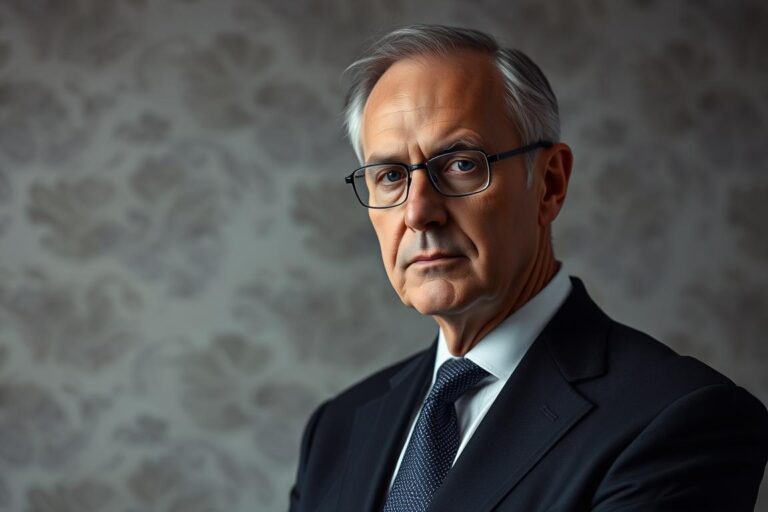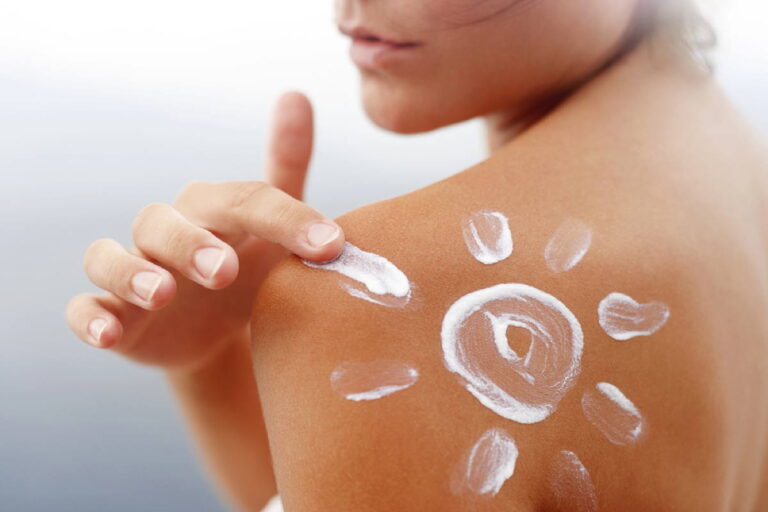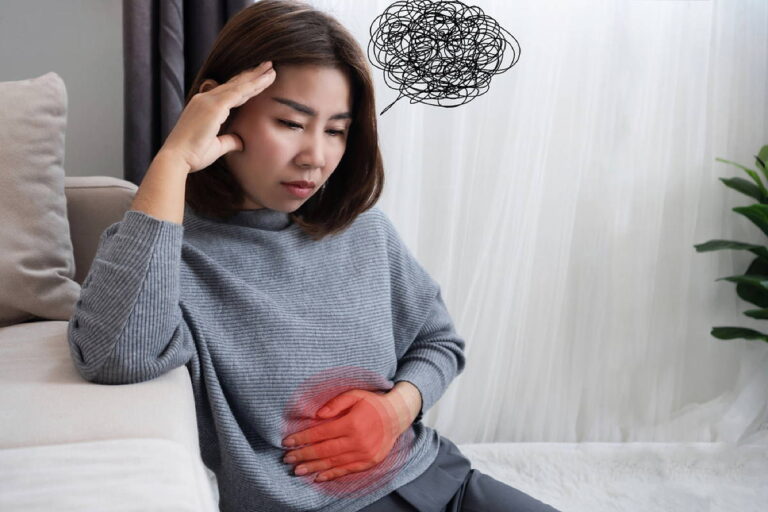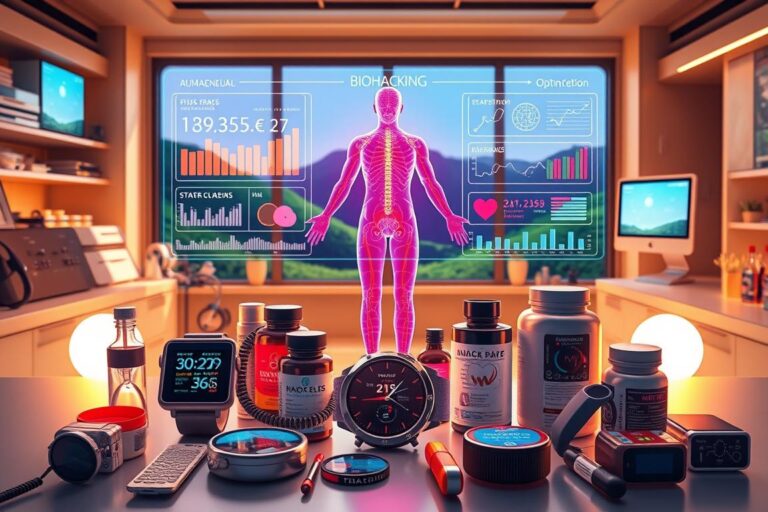The placebo effect – when thoughts heal
Did you know that empathetic communication from doctors can significantly enhance the placebo effect? Studies show that emotional connections play a crucial role in treatment and can lead to remarkable healing results. The placebo effect as a healing factor illustrates how expectations and beliefs can cause measurable neurochemical changes in the brain and body that activate self-healing powers.
One fascinating aspect of the placebo effect is the role of oxytocin, the so-called “love hormone”. It promotes trust and emotional bonding between patients and practitioners, thereby enhancing the placebo effect. A positive doctor-patient relationship is essential to maximize the benefits. This underlines how much thoughts and beliefs can influence healing.
In addition, complementary therapies such as acupuncture and spiritual healing can be integrated into treatment plans to optimize healing, as long as they are consistent with the patient’s worldview and subject to quality control. Positive emotional states such as love and trust also have a proven impact on the immune system by strengthening thymus activity and thus activating self-healing powers.
Important findings
- Empathetic doctor-patient communication reinforces the placebo effect.
- Oxytocin plays a key role in emotional bonding and healing.
- Positive emotions strengthen the immune system and promote healing.
- Complementary therapies can support the placebo effect.
- Patients’ beliefs and expectations lead to measurable neurochemical changes.
What is the placebo effect?
The placebo effect is defined as the body’s reaction to the administration of a placebo. This effect shows that the healing is not achieved by the substance itself, but by the belief in its effectiveness. The placebo effect as a healing factor clearly shows how strongly our thoughts and emotions can influence our physical well-being. Studies have shown, for example, that a simple placebo such as sucrose can be just as effective as an actual drug, illustrating the power of belief in healing.
A fascinating area of research, psycho-neuro-immunology (PNI), has further revealed how our thoughts and emotions influence the immune system. This plays a key role in the placebo effect as a healing factor. The placebo effect occurs when a patient experiences healing despite receiving a drugless treatment, but the healing is influenced by the patient’s attitude and trust in the healer and the therapeutic environment. The placebo effect is often used in medical studies to test the efficacy of new drugs, which underlines its importance in evidence-based medicine.
Every day, around 128,000 people in Germany seek alternative healing methods from alternative practitioners, which shows how many people are looking for alternative healing methods in which placebo therapy could play a role. Placebos are drugs without active ingredients that can nevertheless improve symptoms in up to 50% of patients. These can help with a variety of conditions, including pain, PMS, depression, gastrointestinal problems and the common cold. The effect can even be influenced by the dosage form, the color of the tablets and the name of the medication.
History and development of the placebo effect
The history of the placebo effect goes back a long way in the history of medicine. Originally, the placebo effect was mainly used in pharmaceutical research as a means of checking the effectiveness of medication. An important pioneer in this field was Justinus Kerner, who used mesmerism and the so-called “nerve tuner” in the 19th century to support his patients’ imagination and belief in healing.
Kerner even went so far as to use written amulets to activate the healing power of his patients’ imagination. He vehemently defended these approaches, emphasizing that they reflected the principles of the placebo effect by harnessing the imagination and faith of patients. This shaped a fundamental aspect of how we think about the placebo effect today.
Placebo research gained considerable importance thanks to the work of Henry K. Beecher in the 1940s. Beecher’s studies from 1945 are considered a milestone, as they scientifically proved the power of the placebo effect. His findings showed that a significant proportion of medicines achieved their effect through the expectations of patients.
One of the oldest documented uses of the placebo effect can be found in alternative healing methods. Here, the power of imagination has always played a central role in the healing process. The placebo effect often brings about positive changes, even when no chemically active substances are administered, but through faith and the therapeutic relationship alone. These ideas challenge the model of evidence-based medicine by proving that healing is also possible through non-chemical, psychological means.
How the placebo effect works as a healing factor
The placebo effect as a healing factor is a fascinating phenomenon that shows how strongly belief in a treatment can influence health. According to studies conducted by H. K. Beecher in 1952 and 1955, the placebo effect can contribute up to three quarters to recovery by activating the body’s own processes.
A notable example of this is the case of Mr. Wright, whose tumors shrank significantly despite placebo treatment. This case illustrates the power of faith healing and how it can bring about physiological changes.
The scientific study of the placebo also reveals statistical aspects, as in the research of L. Lasagna in 1954 and 1955, which emphasize the role of patient expectations and their influence on healing. It is interesting to note that positive emotions and the belief in a treatment can activate physical healing processes, such as reduced stress hormones.
Healthcare providers have the opportunity to actively utilize the placebo effect. A supportive doctor-patient relationship, as described by P. Martini, can create positive expectations and thus promote the healing process. However, it is important to distinguish the placebo effect from its negative counterpart, the nocebo effect, where negative expectations can have negative health consequences.
In summary, it can be seen that the placebo effect plays an important role as a healing factor in medicine. Studies by S. Wolf and colleagues provide empirical evidence that placebos can be effective in various medical contexts and that the connection between mind and body is essential for successful healing.
Scientific mechanisms behind the placebo effect
Scientific research into the placebo effect in medicine has shown that several mechanisms are involved in its effect. Central to this is the patient’s expectations, learning processes and conditioning as well as the quality of the doctor-patient relationship.
Expectations
One of the main mechanisms of the placebo effect in medicine is expectation. Studies have shown that believing that a treatment is effective can cause actual physiological changes. If patients believe that a placebo is effective, this can demonstrably lead to a measurable reduction in pain. Confidence in one’s own healing power influences the body’s regulatory systems and can improve therapeutic outcomes.
Learning processes and conditioning
Learning processes and conditioning also play a decisive role. When patients have positive treatment experiences, this reinforces their expectations for future treatments. The concepts of self-efficacy, i.e. the belief in one’s own ability to influence health, have shown that they lead to better health outcomes, particularly in the case of chronic illnesses.
Doctor-patient relationship
The relationship between doctor and patient is another critical factor in the placebo effect in medicine. A trusting and supportive interaction can increase the patient’s confidence in the treatment and thus the effectiveness of the effect. Programs such as mindfulness-based stress reduction (MBSR), which include techniques such as meditation and yoga, have been shown to reduce stress and improve healing processes.
The placebo effect in modern medicine
In modern medicine, the use of placebo is increasingly recognized as a legitimate component. Despite initial skepticism, the placebo effect has become established, particularly in pain therapy and for mental illnesses. The belief in the efficacy of a treatment can produce amazing healing effects, even if the substance administered does not contain any active ingredients.
The placebo effect is based on the patient’s belief in the treatment. This expectation can trigger biochemical processes in the body that contribute to healing. Many studies have shown that positive autosuggestion, as propagated by Émile Coué, for example, can achieve amazing healing results. This is a key element of the placebo effect and emphasizes the importance of inner attitude for recovery.
The concepts of salutogenesis and resilience are closely linked to the use of placebo in medicine. The idea that the body has an inherent ability to heal itself – known as the ‘inner doctor’ – is central to understanding the placebo effect. Historical figures such as Hildegard von Bingen and modern examples such as Albert Schweitzer and Norman Cousins have all contributed to the recognition of the placebo effect. Their work emphasizes that the patient’s mental state and confidence in the treatment can be crucial factors in recovery.
The history of modern psychotherapy also shows how closely the use of suggestion and positive expectations is linked to the effectiveness of treatments. Hypnosis and autosuggestion are direct applications of these principles. Naturopathy and the life reform movement also emphasize the role of natural healing methods and the importance of the mental state in recovery, further cementing the place of the placebo effect in modern medicine.
Examples of the placebo effect
The placebo effect plays a crucial role in various medical fields. Here are some outstanding examples that illustrate its effectiveness:
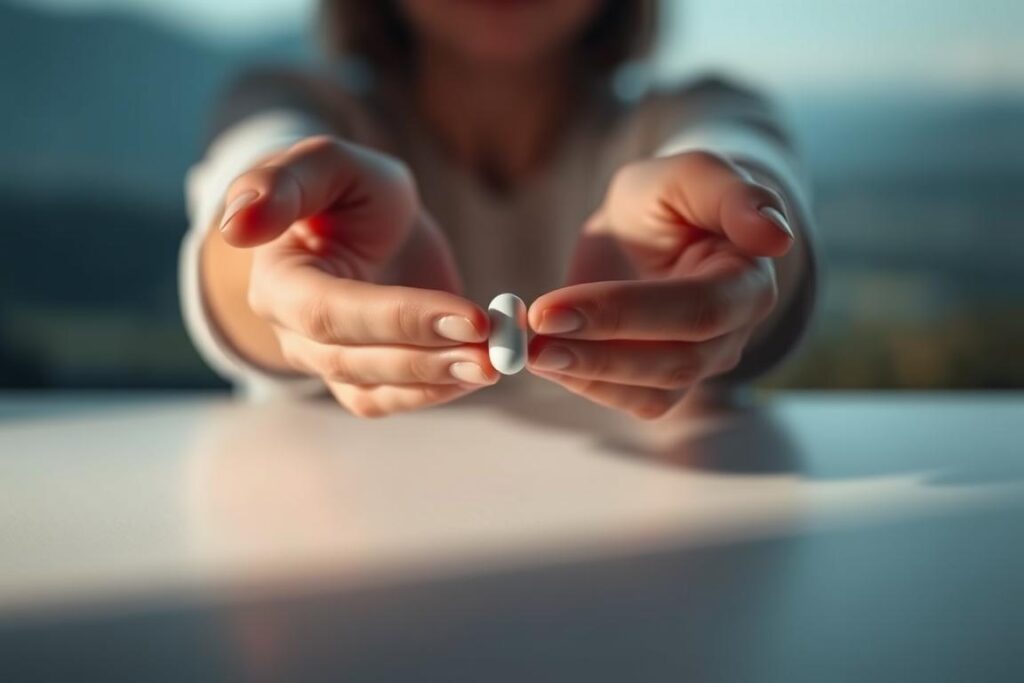
Pain therapy
H. K. Beecher’s studies from 1952 and 1955 indicate that the placebo effect in pain therapy is remarkable. According to his studies, 35% of patients experienced pain relief from placebos. In another study by A. Wolf and R. H. Pinsky (1953), 40% of patients reported significant pain reduction after the administration of placebos during post-operative care. These data prove the effectiveness of the placebo in pain therapy.
Mental illnesses
The placebo effect has also been shown to be valuable in the treatment of mental illnesses. In 1956, A. Jores found that 25% of patients undergoing psychiatric treatment experienced an improvement in their condition as a result of placebos. These results underline the psychological influence and potential of placebo therapy in the treatment of mental disorders.
Diseases and complaints
Data from the 19th century also show the importance of the placebo effect. W. Cobbett (1800), for example, reported that 60% of patients showed improvements in their symptoms after taking a placebo sugar remedy. In addition, a study by L. Lasagna, F. Mosteller, J. M. von Felsinger and H. K. Beecher (1954) found that 39% of patients responded to a placebo in the treatment of angina pectoris. These historical findings make it clear that placebos have been used effectively for a long time.
Activate self-healing powers: The influence of the mind
The activation of self-healing powers through the influence of the mind is based on the understanding and application of various mental techniques. Positive affirmations, visualizations, meditation and hypnotherapy are crucial steps in promoting faith healing. By consciously using these methods, everyone can learn to mobilize their inner healing powers in a targeted way.
A supportive environment is equally crucial. Supportive health professionals who share the philosophy of self-healing can make a big difference. Connections to social networks that convey positive messages reduce stress and strengthen the immune system. Studies have also shown that positive social contacts can activate self-healing powers.
Another important aspect is mindfulness. Mindfulness-based stress reduction (MBSR) programs have proven to reduce stress and support the body’s natural healing powers. The ability to listen to one’s own body, deal with symptoms and recognize emotions strengthens individual health competence and promotes self-healing.
Case studies such as that of Mr. Wright, who experienced spontaneous tumor shrinkage as a result of his belief in the drug Krebiozen, illustrate the power of conviction. Dr. Moseley’s studies of knee surgery patients show something similar: the success of many interventions was largely dependent on the patient’s belief and not necessarily on the medical intervention itself.
It is important to mentally engage in the healing process without clinging to specific results. The focus should be on the growth process. By understanding ourselves more than our illness, we can access robust inner resources and promote healing. The placebo effect proves that believing in the efficacy of a treatment can lead to significant health improvements even without active ingredients. These findings illustrate the power of thought and how it can help to activate self-healing powers.
Mind-body medicine and the placebo effect
Mind-body medicine makes targeted use of the placebo effect to promote healing by linking mental and physical processes. The placebo effect is a central concept in understanding the healing powers of the mind, and shows how important patients’ expectations and beliefs are to the success of treatment. Current studies on the placebo effect confirm the healing powers anchored in the doctor-patient relationship.
The quality of this relationship significantly influences the patient’s experience of illness, quality of life and illness behavior. This means that the “doctor as medicine” can unfold its potentially beneficial effects.
Workshops on this topic focus on understanding and experiencing chi energy, a key concept in mind-body medicine. Eva Reich’s work with bioenergetic processes and her methods of orgone therapy will be emphasized. Practical energy work exercises and demonstrations will be conducted during the workshops to help participants experience the self-regulatory effects of cosmic energy.
Scientific research into the placebo effect emphasizes how crucial communication and the relationship offered by the doctor can be. Mind-body medicine teaches us to understand the placebo effect and to use it in a targeted way to support healing processes.
The nocebo effect: when thoughts make you ill
While the *placebo effect* brings about positive health changes, the nocebo effect can have the exact opposite effect. Negative expectations can lead to actual physical complaints. This phenomenon is just as real and well documented as its positive counterpart.
In the 18th and 19th centuries, medical and religious arguments influenced the concept of health. The harmfulness of onanism was emphasized by doctors such as Samuel Auguste Tissot and Christoph Wilhelm Hufeland, who warned of the health risks. The idea of negative expectations and their physical effects has been deeply rooted in our consciousness ever since.
Definition and differences to the placebo effect
The nocebo effect occurs when negative expectations lead to negative physical effects. In contrast to the placebo effect, which brings about health improvements through positive expectations, the nocebo effect worsens a patient’s condition and reduces their chances of recovery.
Effects of negative expectations
Negative expectations can be reinforced by mechanisms such as anxiety and stress, which increase susceptibility to disease. Hormones released in response to the expectation of a treatment effect also play a role. While endorphins are produced for pain relief, regardless of whether the treatment is real or a placebo, negative expectations can produce opposite effects.
Strategies to reduce the nocebo effect
In order to minimize the nocebo effect, it is crucial to inform patients well and reduce their fears. A trusting doctor-patient relationship can help to minimize negative expectations. Empathetic communication and positive reinforcement are key elements here. Medical practices need to be aware of the power of negative thoughts and develop strategies to support patients’ mental health.
Placebo research: new findings and future prospects
Placebo research is making continuous progress and bringing astonishing findings to light. A central focus is on the question of how the placebo effect can be systematically used to improve treatment outcomes in modern medicine. It has been shown that improved patient education and communication can make a significant contribution to strengthening the placebo effect.
Recent studies suggest that patients’ expectations and beliefs are crucial to the effectiveness of placebos. Research shows that when patients have positive expectations of a treatment, it can actually improve their physical response. The relationship between doctor and patient also plays an important role.
The future of the placebo effect could lie in the development of personalized therapeutic approaches that use the psychological and neurobiological mechanisms of the placebo effect. The use of placebos in clinical practice can be ethically justifiable if it is used transparently and for the benefit of the patient.
In summary, despite the complex challenges, placebo research offers promising prospects for the future of the placebo effect. Targeted research and innovation could open up new, effective approaches to improving healthcare.
Successful examples from alternative medicine
In alternative medicine, there are numerous approaches that use the power of faith and the principle of the placebo effect. Homeopathy, acupuncture and herbal medicine are just a few examples that show how positive the effects can be.
Homeopathy
Homeopathy is based on the idea that “like can be treated with like”. The smallest doses of natural substances, which in high doses would cause similar symptoms to the disease, are intended to contribute to healing. This practice uses the patient’s trust and expectations to bring about positive changes. History shows that homeopathy was introduced in the 18th century by Samuel Hahnemann and has played a significant role in alternative medicine ever since.
Acupuncture
Acupuncture is a traditional Chinese form of medicine in which special needles are inserted into specific points on the body to regulate the flow of energy and promote healing. This method has undergone many scientific studies that prove its effectiveness, particularly in pain treatment and stress reduction. What is important here is the patient’s trust in the treatment, which contributes significantly to its effectiveness.
Herbal medicine
Herbal medicine, also known as phytotherapy, uses medicinal plants to treat various ailments. The effectiveness of many herbs has been proven by centuries of use and scientific studies. Examples such as the calming effect of camomile or the immune-effective properties of echinacea underline the importance of these natural remedies. The influence of the placebo effect is also often evident here, when patients actually experience improvements based on their positive expectations.
Recommendations for patients: Use the placebo effect
The benefits of the placebo effect can be beneficial to patients in many ways. By being open to the possibilities of the placebo effect, patients can recognize its potential in improving treatment outcomes. Especially in combination with conventional therapies, the placebo effect can activate self-healing powers and promote general well-being.
Studies show that around 70% of cancer patients consider face-to-face conversations with their doctors to be the most important source of information. This aspect underlines the importance of empathic communication, which has been shown to be associated with better psychological adjustment in breast cancer patients. Empathic communication between doctor and patient contributes significantly to acceptance of treatment and improvement of psychological state.
It is equally important for breast cancer patients to be actively involved in treatment decisions. Approximately two-thirds of newly diagnosed breast cancer patients want to be actively involved in their treatment decisions. This emphasizes the importance of patient-centered care and shows that the benefits of the placebo effect contribute significantly to improving treatment outcomes. In addition to medical treatment, moderate endurance exercise can also reduce breast cancer mortality by up to 50%, without any side effects.
In addition, 70% of women with breast cancer prefer personalized treatment plans. This need for individualized medical advice illustrates that a trusting relationship between doctor and patient is crucial to achieve optimal treatment results. By incorporating the placebo effect into therapy, patients can therefore benefit from comprehensive and holistic care.

